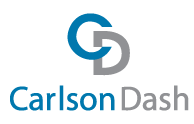 The beginning of a new year calls on us to look back and learn from what we’ve done so that we can put our best foot forward in the coming year. At the close of 2017 and the ushering in of 2018, there has been an increase in social awareness related to sexual harassment, and particularly sexual harassment in the workplace. With the subject of sexual harassment at the forefront of social conversation, now is a good time for employers to examine their own polices and procedures relating to sexual harassment so that they can create a safe working environment for their employees.
The beginning of a new year calls on us to look back and learn from what we’ve done so that we can put our best foot forward in the coming year. At the close of 2017 and the ushering in of 2018, there has been an increase in social awareness related to sexual harassment, and particularly sexual harassment in the workplace. With the subject of sexual harassment at the forefront of social conversation, now is a good time for employers to examine their own polices and procedures relating to sexual harassment so that they can create a safe working environment for their employees.
What is Sexual Harassment in the Workplace?
Title VII of the Civil Rights Act of 1964 (“Title VII”), which applies to employers with 15 or more employees, prohibits sex discrimination, including sexual harassment, in the workplace. For employers that have fewer than 15 employees, state law governs. Most states have enacted anti-discrimination laws that apply the spirit of Title VII to employers with fewer than 15 employees. In Illinois and Wisconsin, for example, the Illinois Human Rights Act (“IDHR”) and the Wisconsin Fair Employment Act (“WFEA”) both prohibit sexual discrimination harassment and apply to an employer that has 1 employee.
Sexual harassment includes unwelcome sexual advances, requests for sexual favors, and other verbal or physical conduct of a sexual nature, among other things. The law distinguishes conduct that amounts to sexual harassment from conduct that constitutes rude behavior, such as simple teasing, isolated incidents, or offhand comments. While an employer should certainly discourage all of these behaviors, the focus of this article is how an employer can protect its employees and insulate itself from liability for sexual harassment.
How Can Employers Insulate Themselves from Liability?
An employer may be held liable for the harassing conduct of its employees. With awareness of sexual harassment on the rise, employers must be hyper-vigilant to create a no-tolerance culture and to respond to complaints of sexual harassment. There are several levels of action an employer must take to put an end to workplace sexual harassment and to insulate itself from liability.
1. Adopt a Written Policy on Sexual Harassment
First, every employer should adopt a written policy on sexual harassment. The policy should be included in the company’s Employee Handbook and should specifically set forth the steps an employee should follow to report an incident of sexual harassment. The policy must include anti-retaliation language. For good measure, the employee should sign and acknowledge that he/she received, reviewed, and understands the policy.
Employers need to review, and if necessary, revise their policies and procedures relative to understanding claims of sexual harassment and properly investigating and responding to such claims. With proper and appropriate procedures relating to sexual harassment claims, including a proper investigation and response to any claims made, an employer can limit or prevent its liability for such claims.
2. Implement the Policy in a Practical and Effective Way
Second, employers should ensure that there is an easy, accessible, and practical way that employees can use the anti-harassment policy. For instance, the Handbook should specify to whom reports of sexual harassment should be made. However, the policy is effectively useless where the reporting contact is the alleged harasser, so a backup reporting contact should be provided.
Another way an employer can promote its anti-harassment policy and explain its reporting procedures is by affirmatively raising the topic of sexual harassment with its employees. The employer always has the option to bring in counsel to run the discussion and to answer any specific questions employees may have, but at a minimum the employer should discuss the best way to approach the subject and how to answer any questions with its employment counsel beforehand. Ultimately, the most important aspect of this step is that the employer expresses strong disapproval of sexual harassment and makes itself available to clarify the process set forth in the written policy.
3. Train your Managers and Supervisors
Generally, an employer’s first line of defense regarding claims of sexual harassment lies with its managers and supervisors. As such, your managers and supervisors must understand how to identify claims of sexual harassment and what they must do when they witness sexual harassment or are informed of such claims. An employer does not want to be faced with the situation where one of its managers received notice of possible sexual harassment and then failed to react. This could lead to the company being liable on a claim to which it never had the opportunity to respond. In many cases, training could be the difference in whether a company is ultimately found liable.
4. Conduct a prompt and thorough Investigation.
Where no adverse employment action is taken against the employee, an employer can defend itself by showing that it exercised reasonable care to prevent and promptly correct any sexual harassment. Steps 1 through 3 above demonstrate how an employer can exercise reasonable care to prevent sexual harassment.
To promptly correct sexual harassment that does occur, an employer should work with an objective third party, such as employment counsel, to do the following:
- Interview the victim;
- Interview the alleged harasser and any potential witnesses;
- Document findings and conclusions; and
- Work to ensure that the harassment stops, whether it be by terminating the harasser, taking other action to separate the harasser from the victim, or another approach recommended by employment counsel.
An investigation of sexual harassment must be taken seriously and conducted promptly. By engaging counsel in this process, the employer demonstrates to the victim that sexual harassment will not be tolerated, and therefore puts itself in the best position to defend from liability.
If you are an employer and have questions about how to create a safe work space for your employees and insulate yourself from liability, please reach out to an employment attorney at Carlson Dash, LLC to assist you.
This document is intended for informational purposes only and is not legal advice or a substitute for consultation with a licensed legal professional in a particular case or circumstance.
For additional information on this topic, please reach out to Carlson Dash directly.

